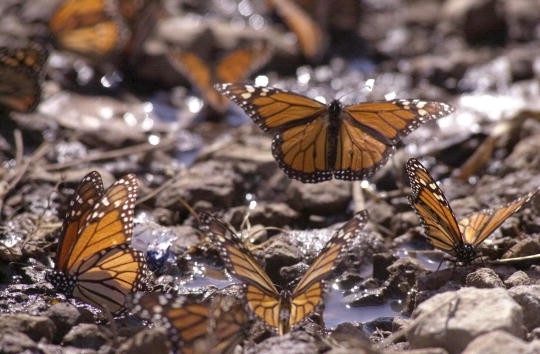
Monarch butterfly's population has been declining as it reaches its Mexican wintering grounds. Fewer milkweeds that thrive in the northern part range could not justify the decrease in numbers, researchers report suggests in a new analysis.
The study was published in the BioScience journal which evaluates for more than 10 years studies of monarch butterflies including a profound assessment of milkweed populations that grows in Illinois. It is the state where the summer range of the migrating butterflies takes place.
According to Science Daily, monarch butterflies take a few of its generation to journey north where it starts from Mexico to the Midwestern United States to Canada where it spent summer, but a trip back home is enduring. A generation of monarch butterflies voyages back by flying as far as 2,500 miles to its wintering ground in Michoacan.
In Mexico, the statistics of monarch butterflies have plummeted from a towering 682 million in 1997 to only 42 million in 2015. Researchers are having a hard time figuring out what causes the continuous decline. A common theory that comes to mind is the shrinkage in milkweed population. The plant is the only vegetation that monarch larvae can feed on.
Milkweed disappearances are associated with the use of herbicides which was used since the late 1990's which permitted farmers to administer non-selective herbicides to fields. The biggest problem is that milkweeds are vulnerable to glyphosate, the generally used herbicide that protects crops from weeds.
"Monarch adults feed on flowers, including milkweed flowers, before and during their southern migration. If they are suffering from a lack of nutrition during migration, it could make them more susceptible to other stresses," stated U.S. Geological Survey Fort Collins (Colorado) Science Center research ecologist Ian Pearse.
Aside from the herbicide that is wiping out milkweeds, the plant also fights for its survival against pests and other insects. However, its main pest, the aphids have created its own defenses to counter the toxins from milkweeds. However, a new research by the College of Agriculture and Life Sciences professor of Ecology and Evolutionary Biology, Anurag Agrawa, suggests that the plant's toxins affect the web of animals or other insects particularly ants that herd aphids.
Cornell Chronicle points out those ants are attracted to aphids because of the honeydew it secretes. Once the milkweed's toxicity surge, it will not affect the aphids a bit but its secretion that drives away ants. Based on Agrawal's study, although the plants cannot affect the aphids, it can do with its protectors - the ants.
Since milkweed is the plant where monarch butterflies get its nutrition, the butterflies will have a drastic decline in population if the plant itself declines in numbers. Conversion of land to pastures and use of herbicides are some of the reasons of the milkweed's destruction.



